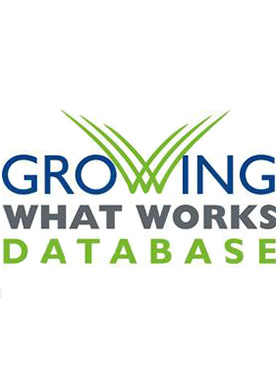On February 7, 2017, Excelencia in Education presented a webinar on their “Growing What Works” initiative that highlights effective examples of programs advancing Latino success in higher education. The Growing What Works database has more than 150 evidence-based programs to serve Latino students better. For the past 12 years, this initiative has displayed programs that are successful in helping Latino students. These examples are critical to the mission of Excelencia in Education “to accelerate Latino success in higher education.” For Excelencia, it is more than just increasing the enrollment of Latinos in postsecondary institutions; it is also about equity and inclusion, it is about action, and it is about serving Latino students in a way that leads them to succeed. The goals of “Growing What Works” are about:
- Public policy - to see what is actually working
- Funders and Foundations - to share what is replicable, what is scalable, and what is sustainable; they want to find successful programs.
- Building a national network – to connect those interested Latino student success
There is a three-step selection process for their Examples of Excelencia.
The program is currently accepting nominations for their 2017 Examples of Excelencia. The winners receive:
- $5000 contribution to support their program initiatives
- Recognition at the Celebracion de Excelencia in Washington, D.C.
- Inclusion in the “Growing What Works” database
- An invitation to discuss Latino issues at the national level
Excelencia in Education underscores the use of effective and evidence-based practices for Latinos. These practices share characteristics and components that positively influence Latino success in education. These characteristics:
- Address a need in a community/institution
- Intentionally serve Latinos
- Integrate cultural competencies
- Use proven practices grounded in research
- Track students through completion of program goals
- Use metrics to ensure effectiveness
- Keep track of data to understand their practices
These “evidence-based practices” bring attention to institutions serving Latino students effectively, inform current efforts to assist Latino students better, and replicate and scale what works across other institutions and communities. Excelencia believes that “every institution and community is capable of serving Latino students with evidence-based practices.”
Two Examples of Excelencia
Pathway to the Baccalaureate is a K-16 collective impct model that collaborates with stakeholders to increase the number of baccalaureates. The program currently serves over 10,000 students, which includes 60 high schools in nine school systems, six NOVA campuses, and George Mason University. This collective model allows them to work together to promote college and career access, success, and completion for underserved students. In 2009, the program adopted a career pathways framework that broadened their outcomes to include careers pathways. Currently, 55 percent of participants self-identify as Latina/o.
Program Model
- Collective Impact and Operations
- Shared Funding and Governance
- Seamless, Structured K-15 Pipeline
- Holistic, Relationship-Focused Services
- Case Management, Career Pathways Framework
- Common Methodology, Outcomes, and Data-Sharing
Over the last 12 years, the program has demonstrated strong outcomes, including the transition to college, with 87 percent of participants successfully enrolling in post-secondary education after one year of high school graduation. The annual retention rate is currently averaging 83 percent. In 2014-2015, 80 percent of students graduated from George Mason University within three years after transferring to the institution. This program is being replicated in other states and institutions.
Achieving a College Education (ACE) program encompasses 11 programs in 10 community colleges throughout Maricopa County and serves over 2000 students annually in high school. The program also runs an adult education program. Currently, 58% of participants self-identify as Latina/o.
Pathway Model
The Early College Program has three primary goals:
- To increase the number of at-risk students graduating from high school
- Currently works with 96 high schools
- 88 percent of students in ACE graduate from high school
- To increase the number of students continuing to college after completing the ACE program
- 72 percent of ACE completers continue to college, including the adult education program
- 52 percent continue to community colleges
- To increase the number of students completing degrees or certificates
- 81 percent of alumni of the ACE program have gone to college
- 56 percent have completed degrees or certificates or are still enrolled in college
- 84 percent of students were retained in ACE during high school years
- 8 percent have earned 21 to 22 college credits
The program is currently focusing on STEM education and outreach. The ACE program is being replicated in Pima Community Colleges.
In summary, Excelencia in Education is bringing attention to effective practices that work for Latinos and sharing them for scaling and replicability. By sharing programs backed by research, Excelencia is building a national network of exemplary programs that track students using metrics, use data to inform their practices, and accelerate Latino success in higher education.
Watch the entire webinar at https://www.youtube.com/embed/UenwC9daSR0.
